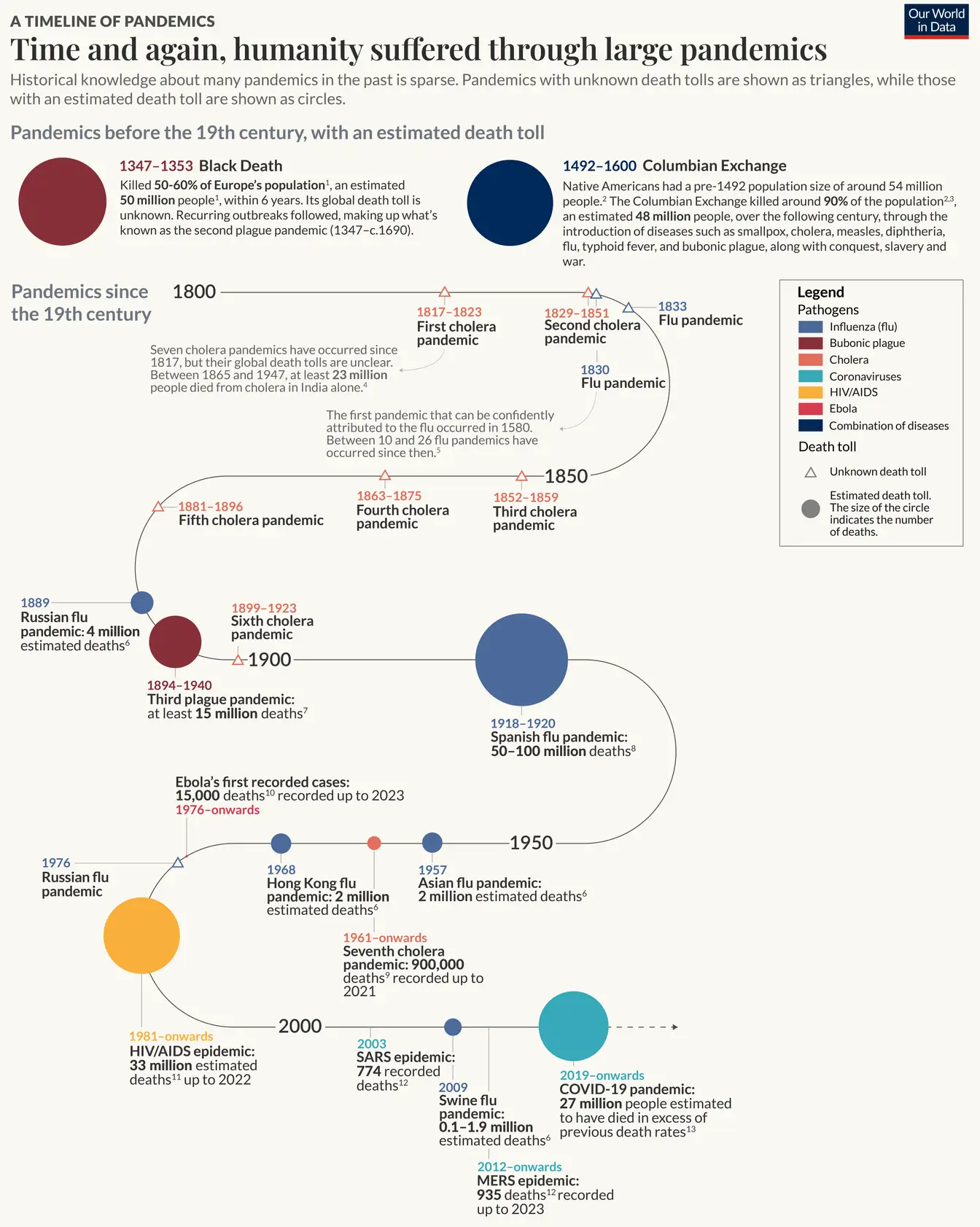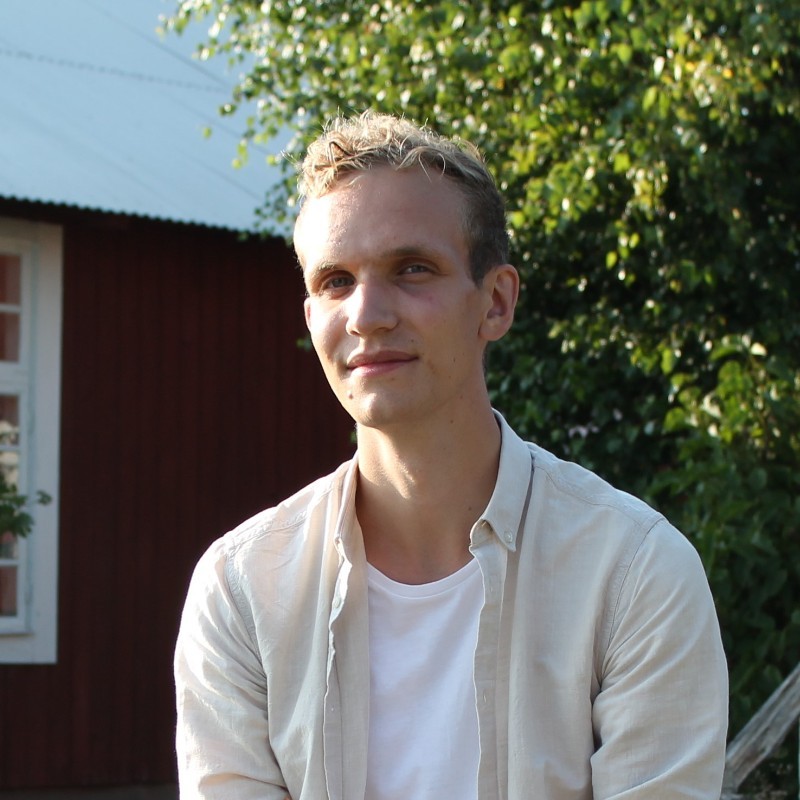Pandemics have affected humanity throughout the ages and history has shown how devastating they can be. The Spanish flu killed 50-100 million people between the years 1918 and 1920. The most recent one, Covid-19, has in August 2024 infected more than 770 million people, and caused at least 7 million deaths. Yet it could have been far worse, had the virus been deadlier, stealthier or more contagious.

Source: Our World in Data
While we continue to face risks from natural pandemics that could spill over from animals (zoonosis), like bird flu, technological advancements in AI and synthetic biology increase the likelihood that in the coming decades we will be confronted with a pandemic that is significantly worse than the coronavirus. Such a situation could, for example, arise if dangerous infectious agents accidentally leak from research labs, or are deliberately produced and spread by malicious actors.
Further, little resources are invested into the area. For example, there are only around 10 people working on the global adoption of the Biological Weapons Convention, which prohibits the development of biological weapons. In contrast, the chemical and nuclear counterparts have 500 and 2,600 employees respectively.

Johan is a Medical Doctor working with infectious diseases. He also runs the Nordic Biosecurity Group (NBG) and is trying to figure out how to best contribute to improving biosecurity and biosafety in a Swedish and Nordic context.
Read more
Preventing catastrophic pandemics – article by 80,000 Hours
Catastrophic pandemics cause area profile – article by EA Sweden
Biosecurity – report by the Open Philanthropy Project
